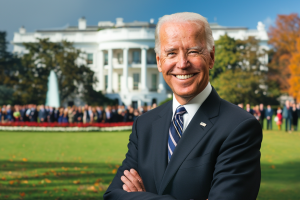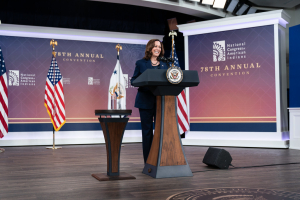Support migrant centric journalism today and donate

By Sanwar Ali:
Table of Contents
- Introduction
- Visa Programs Overview
- Changes Since the Trump Administration
- Executive Actions and Policy Changes
- Impact of Economic Uncertainty on US Jobs
- H1B Visa Program
- H2A and H2B Visa Programs
- L1 Visa Program
- E1 and E2 Visa Programs
- TN Visa Program
- Conclusion
Introduction
The US work visa landscape has experienced significant changes under the Biden administration, particularly in comparison to the policies implemented during the Trump era. This report examines the current state of US work visa options, delving into policy changes, the impact of economic uncertainty on jobs, and the challenges employers face when seeking to hire foreign talent. The discussion focuses on several major visa programs, including the H1B, H2A, H2B, L1, E1, E2, and TN visas.
Visa Programs Overview
The US offers numerous work visa options to employers and foreign nationals seeking employment in the country. These include the H1B visa for specialty occupations, the H2A for seasonal workers in agriculture, H2B visas for non-agricultural industries, the L1 visa for intracompany transferees, the E1 for treaty traders and E2 visas for investors (only certain nationals are eligible), and the TN visa for Mexican and Canadian professionals under the US-Mexico-Canada Agreement (USMCA).
Each of these visa programs has specific requirements and regulations that must be met by both employers and foreign nationals. In addition to these options, the US also offers the Optional Practical Training (OPT) program for international students on F1 visas, which allows them to gain practical work experience in their field of study.
Changes Since the Trump Administration
During the Trump administration, various policies were implemented that limited the availability of work visas and made the application process more difficult for employers and foreign nationals. This included suspending the H1B visa program during the COVID-19 pandemic, and implementing stricter regulations for L1, H2A, and H2B visas.
Under the Biden administration, many of these policies have been reversed or modified. The H1B visa program has been reinstated, and efforts are being made to streamline the overall immigration process. In addition, the administration has introduced new policies and initiatives aimed at expanding the capacity of guest worker programs and addressing the ongoing labor crisis in the US.
Executive Actions and Policy Changes
The Biden administration has taken several executive actions to alter the US work visa landscape. Some of the most notable changes include:
- Revoking the Trump-era order that froze the issuance of some new green cards. Also, letting the Trump ban on certain types of visas, including H1B and H2B visas expire.
- Unveiling a comprehensive immigration reform bill that proposes making temporary workers eligible for lawful prospective immigrant status and increasing the availability of employment-based green cards.
- Expanding the capacity of guest worker programs and implementing new policies to improve labor standards for foreign workers.
These actions aim to create a more accessible and efficient visa system for both employers and foreign nationals seeking work in the US.
Impact of Economic Uncertainty on US Jobs
The ongoing economic uncertainty caused by the Ukraine war and other factors has had a significant impact on jobs in the US, particularly for migrant workers. At the same many businesses have also experienced labor shortages in certain areas, with more open positions than available and willing workers to fill them. Despite layoffs, there is still increased demand for foreign workers in certain areas.
In response to this labor crisis, the Biden administration has focused on expanding legal opportunities for temporary migration and implementing initiatives to upskill and reskill US workers. However, the challenges employers face in obtaining work visas, such as the H1B and H2B quotas, continue to hinder their ability to hire foreign talent.
H1B Visa Program
The H1B visa program is designed for employers seeking to hire skilled foreign professionals in specialized occupations, such as technology, engineering, and medicine. The program has an annual cap of 65,000 visas, with an additional 20,000 visas reserved for applicants with advanced degrees from US institutions. There are exemptions to the H1B visa caps for certain employers such as institutions of higher education, non-profit research organisations, government research organisations, and non-profit organisations linked to higher education institutions.
Under the Biden administration, the H1B visa program has been reinstated after being suspended during the Trump era. In addition, efforts are being made to streamline the application process and prioritize US-educated applicants. Despite these changes, the H1B quota remains a significant challenge for employers seeking to hire foreign talent.
H2A and H2B Visa Programs
The H2A and H2B visa programs cater to employers seeking temporary, seasonal labor for agricultural and non-agricultural industries, respectively. While the H2A program has no numerical cap, the H2B program has an annual quota of 66,000 visas.
The Biden administration has focused on expanding the capacity of these programs and improving labor standards for guest workers. For example, in March 2022, the administration announced an additional 35,000 seasonal worker visas for US businesses. However, the quotas and strict regulations governing these programs continue to pose challenges for employers in need of foreign workers.
L1 Visa Program
The L1 visa program allows US companies with an international presence to transfer employees from overseas offices to the US. The program is divided into two subcategories: L1A for executives and managers, and L1B for specialized knowledge employees.
Under the Biden administration, efforts have been made to streamline the L1 visa program and make it more accessible for employers and foreign nationals. However, the program's strict requirements and complex application process continue to pose challenges for businesses seeking to transfer employees to the US.
E1 and E2 Visa Programs
The E1 and E2 visa programs facilitate international trade and foreign direct investment between the US and countries that have entered into treaties with the US. These visas are available to foreign nationals of treaty countries who engage in substantial trade (E1) or investment (E2) in the US.
Under the Biden administration, these visa programs have been expanded to include more eligible countries and streamline the application process. This has made it easier for businesses with significant foreign ownership interests to conduct trade and investment between the US and treaty countries.
TN Visa Program
The TN visa program, created under the United States-Mexico-Canada Agreement (USMCA), provides greater mobility for professional workers between the US, Canada, and Mexico. The program allows US companies to employ qualified Canadian and Mexican professionals in a range of fields, such as accounting, engineering, law, and science.
The Biden administration has continued to support the TN visa program, recognizing its importance in facilitating the movement of skilled professionals between the three countries. This program offers a valuable alternative to the often oversubscribed H1B visa program for employers seeking skilled foreign talent.
Conclusion
The US work visa landscape has undergone significant changes under the Biden administration, with a focus on expanding visa programs, reducing the backlog in the application process, and addressing the ongoing labor crisis. Despite these efforts, challenges remain for employers seeking to hire foreign talent, particularly due to visa quotas and strict regulations governing various visa programs.
As the labor crisis continues and employers grapple with workforce shortages, it is essential to consider the full range of US visa options available to meet their needs. By understanding the intricacies of these programs and navigating the complex application process, businesses may be able to onboard foreign talent and contribute to the growth and success of the US economy.
workpermit.com helps with US Work Visa: L1, H1B, E2, and O1 Visas
There are various types of US visas that individuals can apply for, depending on their circumstances. Some of the most common employment-based visas include:
L1 visa: This visa is for intracompany transferees who work in managerial or executive positions or have specialized knowledge.
H1B visa: This visa is for specialty occupations that require theoretical or technical expertise in specialized fields.
E2 visa: This visa is for investors who have made a significant investment in a US business and, management or essential skills employees. Only certain nationalities can apply.
O1 visa: This visa is for individuals with extraordinary abilities in the arts, sciences, education, business, or athletics.
Workpermit.com is a specialist visa services firm with over thirty years of experience dealing with visa applications. For more information and advice, please contact us on 0344 991 9222 or at london@workpermit.com(link sends e-mail)





















